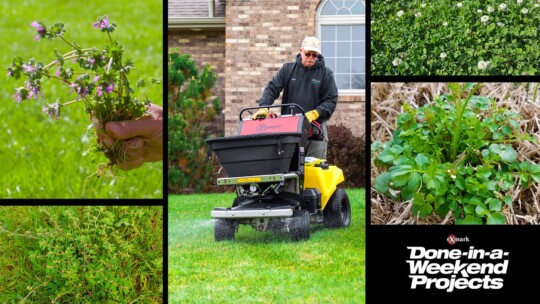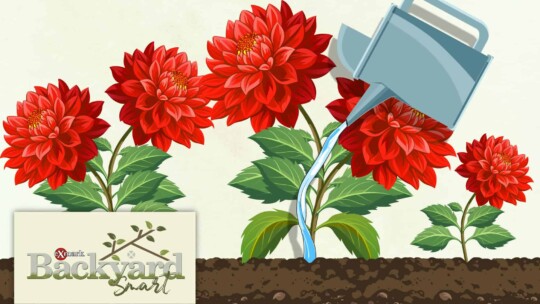We’ve all heard of thatch—but what is it, exactly? Follow along to learn what thatch is made of, get the lowdown on the process of dethatching your lawn, and discover how all it takes is a simple rake or dethatching machine to clean it up and help your grass thrive.
What is Thatch?
Thatch is simply a compacted layer of grass and plant stems, leaves, roots, and other organic debris that builds up faster than it can decompose. It accumulates right below the surface of your lawn and right on top of your soil, at the base of your grasses’ blades.
Overly thick thatch blocks water and fertilizer from reaching your grasses’ roots, and causes them to be trapped and become vulnerable to heat, drought, and stress—further stunting your lawn’s health and growth.
However, thatch isn’t always a bad thing—a layer that’s less than a quarter-inch thick is normal and isn’t cause for alarm. It actually helps reduce soil compaction and water loss through evaporation, and it increases tolerance for cold and heat by protecting the growing blades.
Best Time to Dethatch Your Lawn
For warm season grasses it’s best to dethatch in the late spring or early summer, and for cool season grasses it’s best to do it in early spring or fall. But before you start dethatching, take out your Exmark mower and cut your lawn to half its normal height, to avoid tearing up any live grass in the process. Once mowing is complete, all that’s left to do is take out your rake or dethatcher and remove the thatch!
How Do You Dethatch?
The process of dethatching is simple. You can purchase specialized rakes, but in a pinch a regular rake will do. You can also rent a specialized dethatching machine—aptly called a dethatcher—to make the job even easier. Your lawn might look a bit ragged afterwards, so you’ll need to go over it again—this time just barely skimming the top of your lawn to remove all the loose debris that you just dug up. But before you start, call up your local utility company and have them mark any buried lines to avoid unwanted surprises.
The Benefits of Dethatching Your Lawn
The time and effort that it takes to remove thatch pays huge dividends. Primarily, it exposes your soil to warmth and sunlight, helping carbon dioxide and key nutrients reach its roots, resulting in deeper growth. It also encourages the effectiveness of fertilizers and reduces water pooling on the surface of your yard by facilitating drainage. And, it helps fight back against pesky weeds that thrive in conditions created by a heavy thatch layer. Best of all, it promotes an overall healthier, greener lawn. So, get outside, get dethatching, and free up your soil. Your lawn will thank you later.



